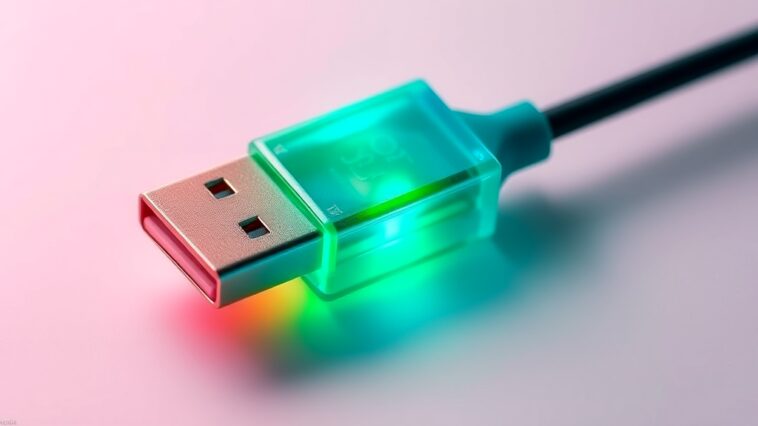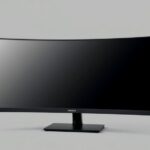When you hear the term “USB Type-C,” you might think it sounds complicated, but don’t worry! We’re going to break it down together. USB Type-C, or USB-C for short, is the latest USB connector type that’s making waves in the tech world. It’s slim, reversible, and backward compatible with older versions. So, what does that all mean? Let’s dive in!
What is USB Type-C?
Imagine a connector that you can plug into your device without worrying about which way is up. That’s USB-C! Unlike older USB connectors like USB-A and USB-B that only fit one way, USB-C allows you to connect from either side. This makes it super easy to use—no more fumbling around trying to flip the plug to fit!
Backward Compatibility
One of the coolest features of USB-C is its backward compatibility. This means that you can still use your older USB devices with a USB-C port as long as you have the right adapter. For example, if you have an old USB stick that uses the USB-A connector, you can connect it to a USB-C port using an adapter. This is great because it saves you from having to toss out all your old accessories!
Why Do You Need USB Type-C?
You might be wondering, “Why should I care about USB Type-C?” Well, let’s check out some reasons:
- Simplicity: With USB-C, you don’t have to worry about which way you’re plugging it in. This simple design saves time and hassle!
- Versatility: USB-C can do a lot! It’s not just for charging your phone. It can also transfer data and connect to displays. This means you can use one cable for multiple purposes.
- Speed: USB Type-C can support faster data transfer rates compared to older USB types. So, whether you’re transferring files or charging your device, things happen quicker!
- Future-Proofing: As technology advances, more devices are moving toward USB-C. Investing in USB-C products now means you’ll be ready for the future!
USB Standards: The Evolution of USB
To understand USB-C better, it’s helpful to look at how USB has evolved over the years.
USB 2.0 to USB 3.0
USB 2.0 was introduced back in 2000, and it could transfer data at speeds of 480 Mbps. Then came USB 3.0 in 2008, which dramatically increased the speed to 5 Gbps! This was a game-changer for transferring large files.
USB 3.1 and Beyond
In 2013, USB 3.1 was released, bringing even more improvements. The USB Implementers Forum (USB-IF) decided to rebrand USB 3.0 as USB 3.1 Gen 1 and introduced USB 3.1 Gen 2, which offers speeds up to 10 Gbps. Fast forward to 2019, and USB-IF announced USB 3.2, which further enhanced data transfer capabilities.
USB 3.2 and USB-C
Only USB-C connectors can use the USB 3.2 Gen 2×2 standard, allowing for speeds of up to 20 Gbps. This means that if your device has a USB-C port, it can transfer data faster than many older models. The USB-IF also updated the logos on USB devices to make it easier to recognize their capabilities.
DisplayPort Alternate Mode & Power Delivery
USB-C isn’t just about data transfer; it can also handle video and power!
DisplayPort Alternate Mode
USB-C can transfer audio and video signals if both the device and the cable support it. This means you can connect your laptop to a monitor or TV using a USB-C cable. Imagine playing video games or watching movies on a bigger screen without needing a bunch of different cables!
Power Delivery (PD)
Another fantastic feature of USB-C is USB Power Delivery (PD). This technology allows USB-C to deliver power to devices, enabling fast charging. Depending on the device, USB-C can deliver up to 100W of power! For example, if you have a laptop that supports USB PD, you can charge it with the same cable you use for your phone.
Thunderbolt and USB4
You might have heard about Thunderbolt and USB4, which share the same connector type as USB-C. Here’s what you need to know:
Thunderbolt 3 and 4
Thunderbolt 3 can transfer data at speeds of up to 40 Gbps when using short active cables or 20 Gbps with longer passive cables. It also supports DisplayPort Alternate Mode and Power Delivery up to 100W. Thunderbolt 4, which builds upon Thunderbolt 3, is backward-compatible with USB 2.0, USB 3.2, and Thunderbolt 3, making it a powerful option for high-speed data transfer.
USB4
USB4 is based on the Thunderbolt protocol and also uses the USB-C connector. It offers similar transfer speeds and capabilities, but it’s royalty-free, which means it could become more affordable and widespread over time. USB4 improves the minimum PCIe data transfer rate to 32 Gbps and enhances security features.
USB-C 2.1 with Extended Power Range
The new USB-C 2.1 revision supports USB Power Delivery 3.1, allowing for a maximum of 240W power charging with the right cables. This means that even high-powered devices like gaming laptops can be charged using a USB-C connection.
Micro USB vs. USB-C
Let’s talk about how USB-C compares to older connectors like Micro USB.
Size Matters
Both USB-A and USB-B connectors are quite large, making them tricky for slim devices like smartphones and portable chargers. This led to the creation of smaller connectors like Micro USB.
USB-C Design
USB-C connectors are more rounded and can plug into devices facing either way. This design is not only easier to use but also more versatile, allowing for more compact devices without sacrificing functionality.
Backward Compatibility
Just like I mentioned before, USB-C is backward compatible! You can connect your Micro USB devices to a USB-C port using an adapter, making it easier to transition to newer tech without throwing out older devices.
Real-World Examples of USB Type-C
Let’s look at how USB Type-C is used in everyday life.
Charging Your Phone
Most new smartphones come equipped with USB-C ports. This means you can charge your phone using the same cable you use for your laptop or tablet. No more digging through drawers to find the right charger!
Connecting to Monitors
If you have a laptop with a USB-C port, you can easily connect it to an external monitor or TV. This is fantastic for presentations or gaming because you can enjoy high-quality visuals without needing multiple cables.
Using Adapters
Say you have an older USB device, like a flash drive that uses a USB-A connector. With a simple USB-C to USB-A adapter, you can still use that flash drive with your new laptop. This adaptability is key to making the most out of your tech.
The Benefits of USB-C
Here are some of the key benefits of using USB-C:
- Convenience: Plugging in your devices is easier than ever. You can connect without worrying about orientation.
- Increased Compatibility: With USB-C, you can use one type of connector for a variety of devices, which reduces clutter.
- Faster Charging and Data Transfer: USB-C allows for quicker charging and faster data transfers, making it more efficient in our fast-paced world.
- Future-Ready: As more devices adopt USB-C, you’ll be prepared for the latest technology without needing to buy new cables.
The Future of USB-C
As technology continues to evolve, USB-C is likely to become the standard for many devices. With its versatility, speed, and convenience, it’s easy to see why it’s gaining popularity.
Expanding Use Cases
In the future, we can expect to see even more devices using USB-C. From laptops and smartphones to cameras and tablets, USB-C is poised to become the universal connector.
Increased Adoption
More manufacturers are recognizing the benefits of USB-C, leading to widespread adoption across various industries. This means that investing in USB-C products now will pay off in the long run.
Why You Should Consider USB-C Now
If you’re still on the fence about USB-C, consider this:
- Cost-Efficiency: By investing in USB-C devices, you’ll save money in the long run. You won’t need to buy multiple cables and adapters for different devices.
- Ease of Use: The simplicity of USB-C means less frustration with plugging in your devices, making your life just a little bit easier.
- Staying Current: As technology advances, having USB-C devices will keep you up-to-date with the latest trends and features.
- Environmentally Friendly: Reducing the number of cables and chargers you need can help minimize electronic waste, contributing to a healthier planet.
Final Thoughts
USB Type-C is more than just a connector; it’s a gateway to a more simplified and efficient tech experience. The benefits of USB-C are clear: ease of use, versatility, and faster performance. With its growing adoption in devices and accessories, now is the perfect time to transition to USB-C.
So, as you shop for new devices or accessories, keep USB Type-C in mind. It’s not just a trend—it’s the future of connectivity! Happy shopping!




